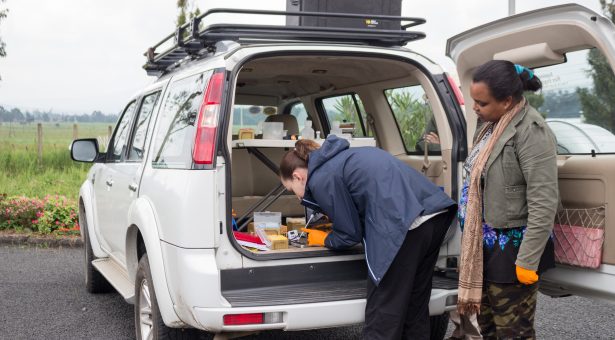Dr. Diane Saunders of MARPLE diagnostics finalist for BBSRC Innovator of the Year Competition 2019
John Innes Centre researcher Dr. Diane Saunders has been selected as a finalist for the Innovator of the Year award following her team’s potentially transformative approach to identifying individual strains of complex fungal pathogens directly in the field.
John Innes Centre researcher Dr. Diane Saunders has been selected as one of 12 finalists in the Biotechnology and Biological Sciences Research Council Innovator of the Year Competition 2019.
The award highlights individuals and small teams who are producing outstanding work from their research funding.
Dr. Saunders’ nomination is in the category for international impact following her team’s potentially transformative approach to identifying individual strains of complex fungal pathogens directly in the field. Working in collaboration with Dr. Dave Hodson from CIMMYT, the nomination follows their successful demonstration of the technology with the Ethiopian Institute of Agricultural Research last year.
Dr. Saunders said: “I’m delighted that this work has been recognised. Wheat rusts are a global threat to agriculture and we are in a constant battle with these diseases. Our diagnostic kit allows users to make immediate decisions regarding disease management within the current growing season.”
Previously, if you were a researcher in a developing country and you suspected local crops were infected with a new rust strain, you would have to wait many months for the sample to be sent off to specialist labs and tested. By this time, it’s usually too late for within season disease control strategies. With Dr. Saunders’ new approach, this process now takes just two days.
What makes Dr. Saunders team’s method so fast is that the entire pipeline, from field sample to strain level result, can be run from a mobile ‘suitcase’ lab. MARPLE (Mobile and Real-time PLant disEase) diagnostics is designed to run at a field site, without constant electricity and on reagents that work in the varying temperatures of the field.
“This means we can truly take the lab to the field,” explains Dr. Saunders. “Perhaps more importantly though, it means that smaller, less resourced labs can drive their own research without having to rely on a handful of large, well-resourced labs and sophisticated expertise in different countries.”
April 30, 2019
John Innes Centre
Norwich, United Kingdom
Related posts
- New atlas reveals climate-critical rangelands cover half the world’s land surface, supporting millions of people and critical ecosystems—yet often ignored despite threats
- 2020 Convention session – 2020 Inspire Challenge pitches
- CGIAR awards Inspire Challenge winners 700K to respond to food system crises
Latest news





